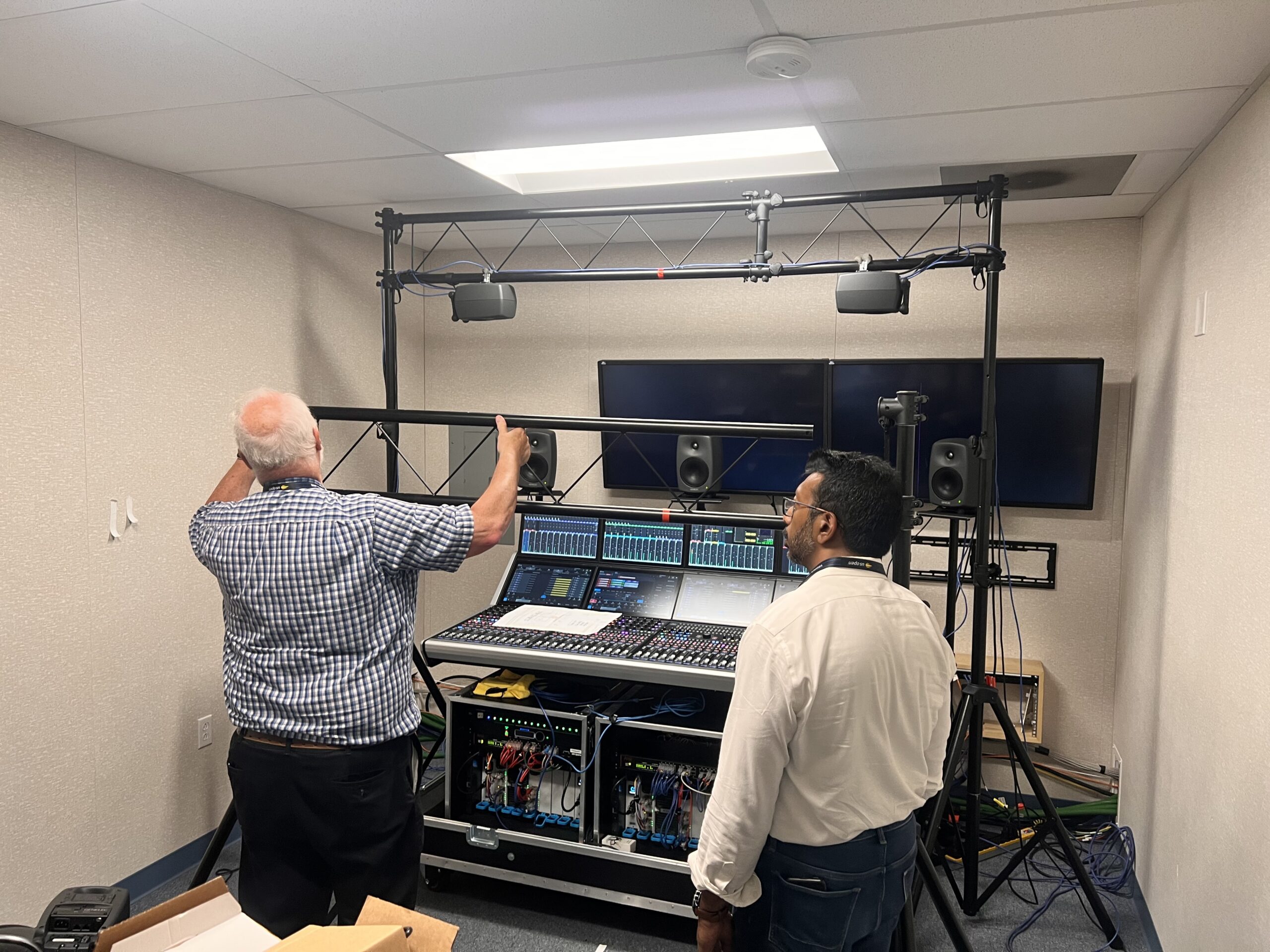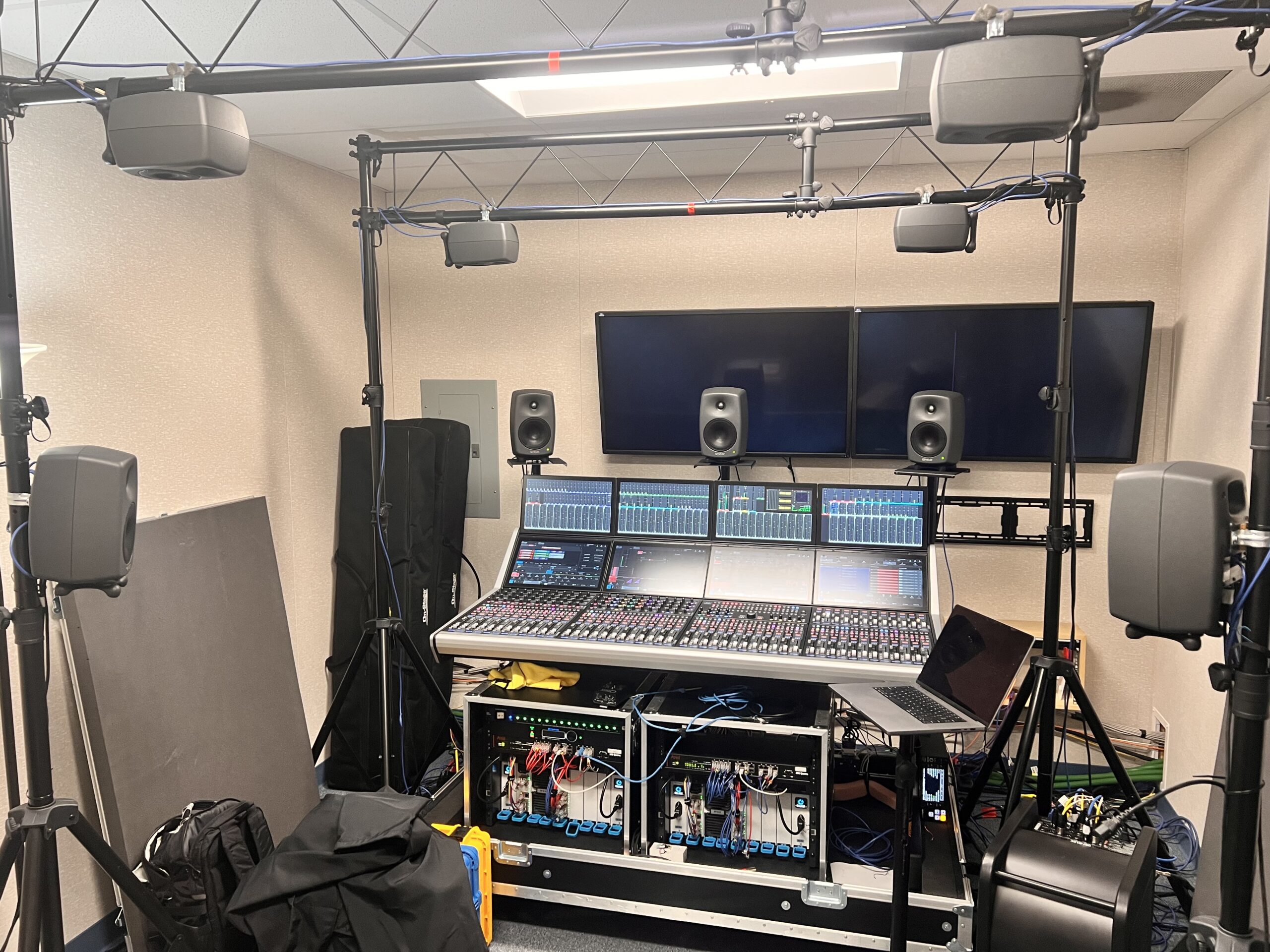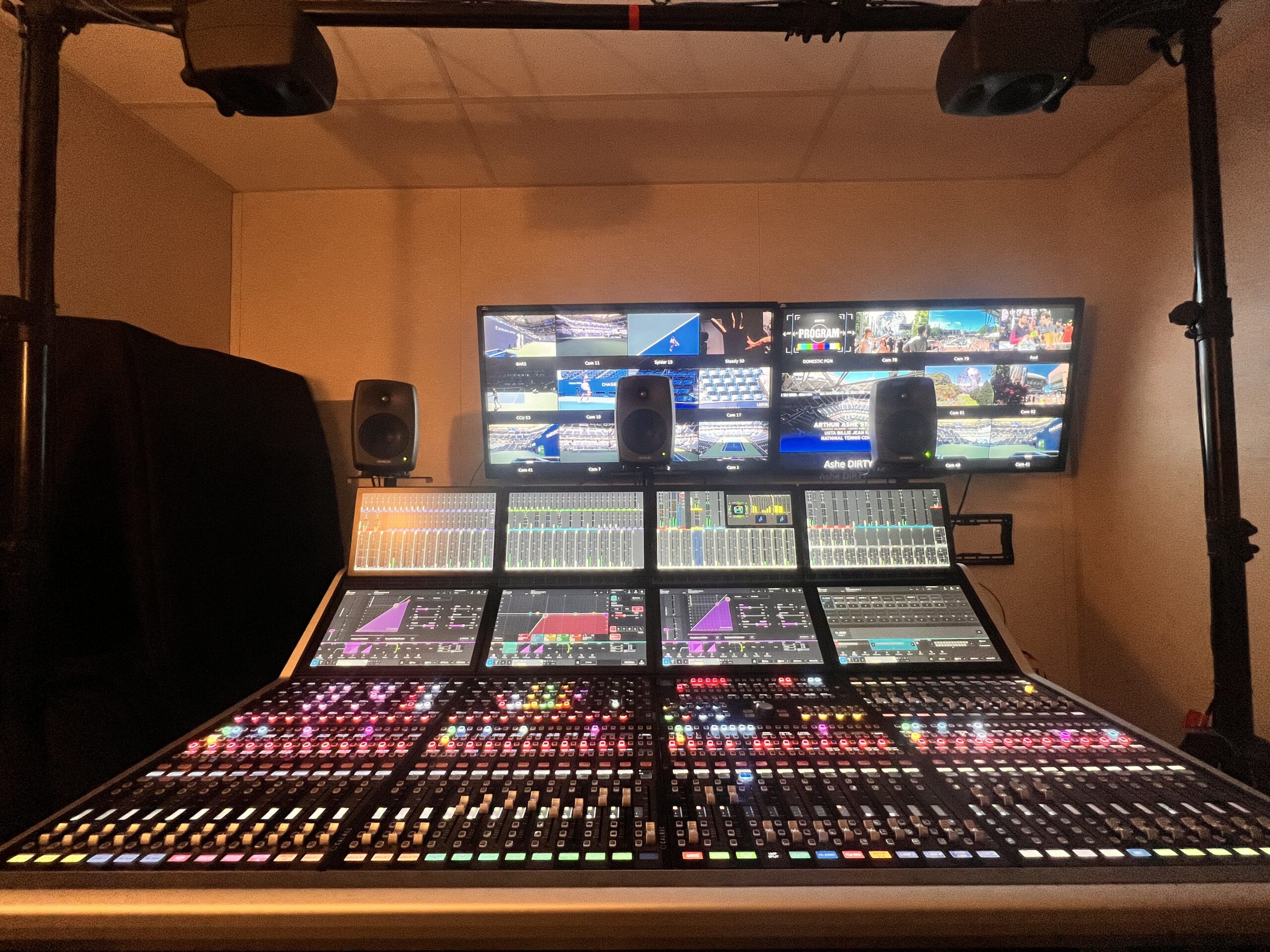Calrec Argo Case Study: Elevating the US Open Tennis Championship Experience With Dolby Atmos
Story Highlights
There’s certainly no doubt the US Open is one of the most prestigious sporting events of the year. Held annually in Queens, New York, the Open draws massive (and often famous) crowds and is, chronologically, the fourth and final Grand Slam tennis tournament of the year. At this year’s Open, I had the pleasure of hosting audio demos that focused on Calrec’s new Argo S audio console featuring Dolby Atmos mixing over an IP infrastructure. The configuration consisted of a 60-physical fader and a 12-virtual fader Argo S console with a Calrec ImPulse core at its heart.

As some of you may know, I’m not only a veteran A1 and longstanding Calrec user, I’m also a live mixing consultant for Dolby. As many of you probably also know, the Dolby name is synonymous with film, music and post-production but in the past few years, we’ve seen live (TV) sports starting to catch up, sensibly, as the addition of Dolby Atmos creates a premium value at a relatively low cost. As anyone in the audio industry knows, hearing and experiencing quality audio is paramount and these demos were an ideal way to show how Argo and Dolby Atmos seamlessly integrate to create the ultimate mixing environment.
The demos, which were mostly conducted in a one-to-one format, were spearheaded by ESPN’s Henry Rousseau. Bringing this vision to life was a truly joint effort between ESPN, Calrec and Dolby Laboratories. The demos had two synergistic elements: the introduction and familiarization with the Argo S and the creation of new Dolby Atmos ‘live’ mixes. To clarify, the tutorials were held in a private room with power and connectivity but without any transmission (hence, they weren’t live.) The audio didn’t actually go anywhere; we essentially took mic splits from Arthur Ashe stadium and created our own just for this room. Our primary audience was mainly A1s, with a presence of EICs (Engineers in Charge) and Executive VPs. In total we hosted more than 60 demos.
 The audio setup for the demos was fairly straightforward. A Dolby Atmos audio monitor system was built first and connected to Genelec speakers using the analog I/O located on the back of the Argo S. The Calrec modular I/O box had to be relocated to the Central Apparatus Room (CAR) to accommodate the needed MADI streams via copper SFPs. An additional Dante connection was made as a point-to-point connection from an Apple MacBook (the Apple/DVS connection allowed the demonstration of Dolby Atmos 5.1.4 music.)
The audio setup for the demos was fairly straightforward. A Dolby Atmos audio monitor system was built first and connected to Genelec speakers using the analog I/O located on the back of the Argo S. The Calrec modular I/O box had to be relocated to the Central Apparatus Room (CAR) to accommodate the needed MADI streams via copper SFPs. An additional Dante connection was made as a point-to-point connection from an Apple MacBook (the Apple/DVS connection allowed the demonstration of Dolby Atmos 5.1.4 music.)
Amidst the intricacies of setting up the audio for this project, it’s important to note that there are some unique aspects of mixing in Dolby Atmos for a live sports broadcast. Essentially, there are two areas that can be easily addressed. The first is the creation of Dolby Atmos content. For TV trucks, this can sometimes mean the addition of four overhead speakers. Even with Calrec Hydra2 cores (proprietary networking rather than ST 2110), Dolby has developed an easy-to-follow workflow within the audio console to achieve a proper, bespoke Dolby Atmos mix (Dolby offers free training for this workflow.) The second area is the workflow through the customer’s television facility. At the end of the day, this is going to be a choice the broadcaster makes with the simple end result of delivering the created audio/video 5.1.4 program to a Dolby encoding device.
What makes Dolby Atmos differ from traditional methods is with it, the mixer and the creatives are given the opportunity to expand the sphere of audio by adding a third dimension — that being the height channels. There are distinct advantages here. Let’s take a stereo scenario, which is one where you’re basically jamming 20 to 30 microphones into two speakers. When you’re allowed to spread the same sounds across three dimensions, each individual microphone becomes more distinct and more elevated and envelopes the listener. This is, quite simply, the beauty of immersive sound.
The US Open was the ideal environment for these demos because a simple addition of four extra Sennheiser 416 shotgun microphones placed above the grandstands and aimed downward provided that third dimension of umbrella audio to which I’m referring. Also, given the liveliness of a primarily New York crowd, there was a constant wall of sound, which even included the sound of commercial aircraft taking off from nearby LaGuardia airport. The heightened level and emotional context of the audio being mixed in Dolby Atmos really made the viewer feel like they were there.
The Argo S performed exactly as I’d expected, very smoothly and efficiently and feedback was positive. Calrec was the obvious choice for this project because its consoles are the de facto choice for live sports here in the US. The A1s expressed enthusiasm for features including immersive bus structure, touch screen dynamics, intuitive touch controls for dynamic processing, customized buttons, spill control and, of course, the seamless integration of Dolby Atmos elements.
From my perspective, features like three-dimensional panning is a necessity and easy to accomplish on an Argo. This means we can quickly place specific sounds in the overhead speakers. As an example, when we place the referee mic into one of these speakers, the result is a psycho-acoustic effect that doesn’t bleed over into microphones that are placed elsewhere, like in the field of play. This is important for Dolby Atmos because it lets you hear those sounds much more clearly.
After all, hearing is believing.
